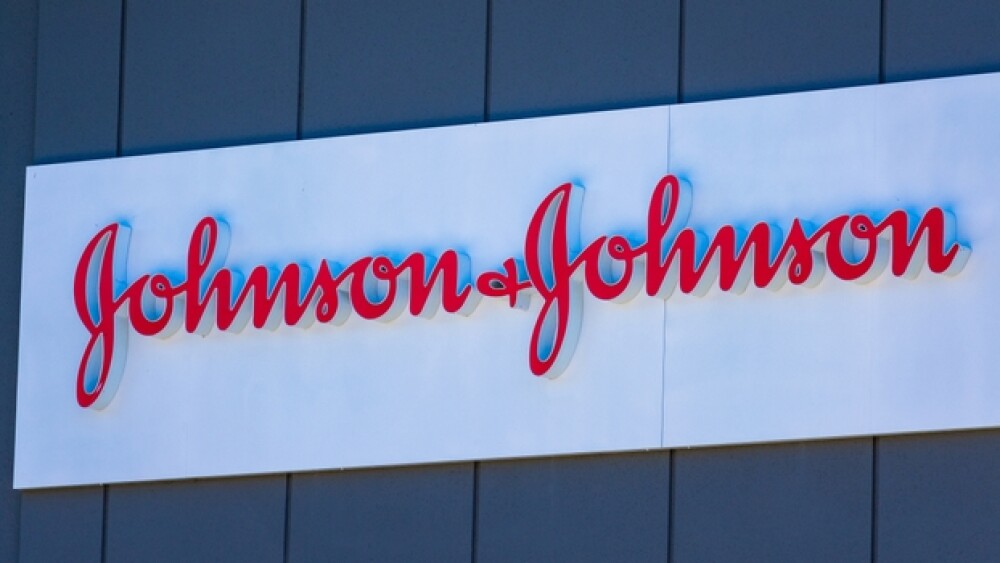Johnson & Johnson published interim Phase I/IIa data in the New England Journal of Medicine showing its single-dose COVID-19 vaccine candidate created an immune response that lasted at least 71 days.
Michael Vi/Shutterstock
Johnson & Johnson published interim Phase I/IIa data in the New England Journal of Medicine showing its single-dose COVID-19 vaccine candidate created an immune response that lasted at least 71 days. The length of time was associated with the interim data point in the participants aged 18 to 55 years.
The data showed that the vaccine induced an immune response and was generally well-tolerated. After a single vaccination, neutralizing antibodies against COVID-19 were observed in more than 90% of volunteers at Day 29 and 100% of the volunteers between the ages of 18 and 55 at Day 57. The neutralizing antibodies were stable through Day 71, which was the latest available timepoint in the study. Data on participants over the age of 65 years is expected later this month.
The company also expects topline data from its larger Phase III trial later this month as well. But, like the other large COVID-19 vaccine trials, is dependent on a percentage of people in the trial actually being diagnosed with COVID-19, so the schedule can be unpredictable. Once that data is available, J&J expects to submit an application for Emergency Use Authorization (EUA) to the U.S. Food and Drug Administration (FDA) shortly afterwards, followed by applications to regulators globally.
The J&J vaccine, which was developed by the Janssen Pharmaceutical Companies of J&J, uses the company’s AdVac vaccine platform. This same platform was used to develop and manufacture Janssen’s Ebola vaccine that is approved by the European Commission, as well as its Zika, RSV, and HIV investigational vaccine candidates.
The J&J vaccine appears to be effective with a single dose—compared to the other authorized vaccines by Pfizer-BioNTech, Moderna and AstraZeneca-University of Oxford, which all require two doses three to four weeks apart. However, J&J is also conducting a two-dose Phase III ENSEMBLE 2 clinical trial. The AstraZeneca-Oxford vaccine has not been authorized in the U.S. yet, and isn’t likely to until late spring, if then.
The Phase I/IIa data described today is limited. The trials were designed to show safety and evaluated both single and double doses. They were not designed to prove the vaccine protected against infections or symptoms—that’s the focus for the Phase III trials.
The Phase I/IIa trial was conducted in about 800 people in the Netherlands, the U.S. and Belgium.
The Pfizer-BioNTech and Moderna vaccines leverage new technology, mRNA, and in Phase III trials both demonstrated about 95% efficacy in preventing symptomatic disease. The mRNA is delivered in minuscule fat particles, called lipid nanoparticles, and once inside the body, causes cells to manufacture pieces of the virus’s spike protein, which stimulates the immune system to recognize the virus.
The J&J vaccine leverages a weakened version of adenovirus 26, which is a common cold virus. It is engineered to carry genetic material from the virus into the body where the cells then churn out bits of the virus that stimulate the immune system.
The researchers wrote, “A single dose of Ad26.COV2.S elicited a strong humoral response in a majority of vaccine recipients, with the presence of S-binding and neutralizing antibodies in more than 90% of participants, regardless of either age group or vaccine dose. An efficacious single-dose COVID-19 vaccine have obvious logistic advantages over a two-dose vaccine, especially during a pandemic.”
J&J has a $1 billion contract with the U.S. government to deliver 100 million doses if it receives EUA from the FDA. However, according to a New York Times report yesterday, the company is behind in its manufacturing efforts. The company had agreed to have 12 million doses of the vaccine ready by the end of February, with the 100 million available by the end of June. But now the company is indicating they are as much as two months behind the original production schedule and won’t meet the initial delivery until the end of April.
However, Carlo de Notaristefani, lead manufacturing adviser for Operation Warp Speed, the federal government program overseeing vaccine development and distribution, noted the delay, but told the New York Times, “I agree there was a problem. Manufacturing of pharmaceuticals is not a black box where you turn the key and start counting.”
But he thinks it’s possible J&J will catch up with its initial production goals by March.
Paul Stoffels, J&J’s chief scientific officer, told the New York Times he expected clinical trial data on safety and efficacy by late January or early February, but wouldn’t discuss production capacity. “We are not ready to release the numbers month by month at the moment, as we are in the discussion with the FDA,” he said.
However, he did say that if the data is good and the FDA grants EUA, “hopefully somewhere in March we’ll be able to contribute” to the country’s vaccination efforts.
In addition to the single-dose advantage over the Pfizer-BioNTech and Moderna vaccines, the J&J vaccine does not require the cold storage the Pfizer-BioNtech and Moderna vaccines have, particularly the Pfizer-BioNTech version, which requires storage temperatures as low as -94 degrees F. The J&J product can be stored in a stable form in a refrigerator for months.





